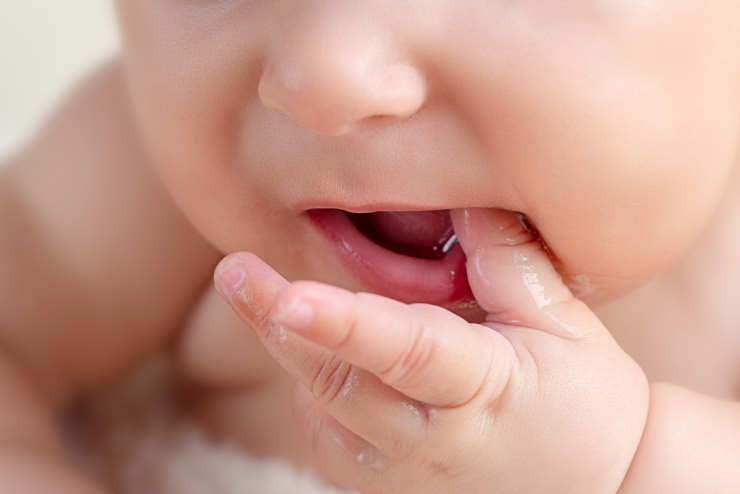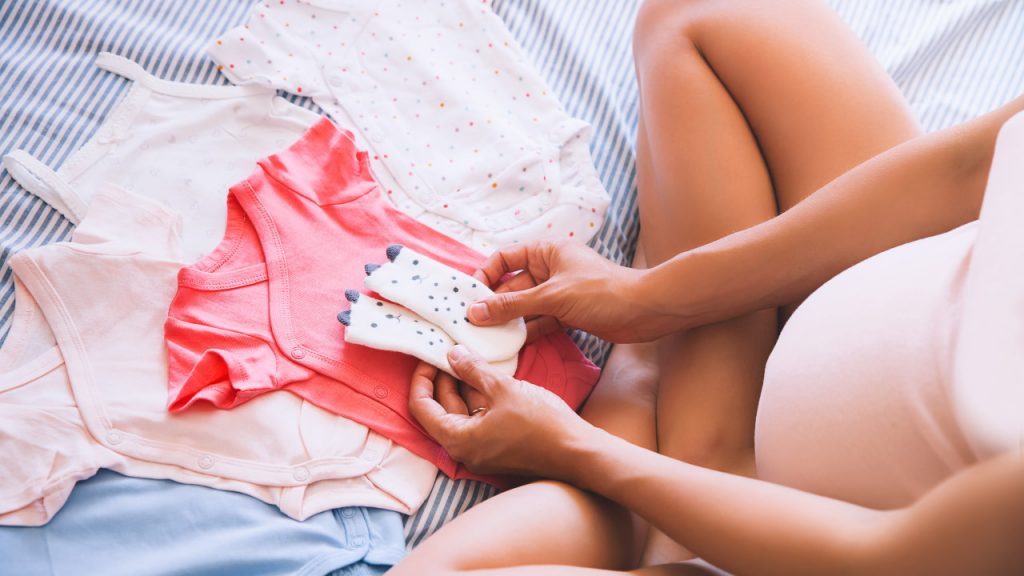Introduction
We recognize that it may be stressful for parents to see their babies while they go through teething and that it can be even more challenging to figure out what those symptoms are and how to alleviate them. This article will examine the correlation between teething and diaper rash and advise how to soothe your fussy baby. First, let’s define teething and diaper rash so we can go into their connection.
Babies naturally undergo “teething” when their teeth emerge through the gums. It is a normal part of a baby’s development, and although it may be uncomfortable, it starts about 4–7 months of age and typically continues until around two and a half years. However, there is no cause for alarm if babies delay the onset of teething. Each child develops at their own pace, including not just crawling and walking but also teething.
What Are the Symptoms of Teething in Babies?

Each baby will have its own unique set of teething symptoms, but there are certain common warning flags to look out for. These symptoms are:
- Gums that are swollen, painful, or both
- The need to constantly chew on something tough
- More crying than normal
- A slight fever (call your doctor if the fever is too much)
- Cough
- A red rash rises to the surface of one cheek (sometimes called a teething rash)
- Increasing amounts of saliva
While teething might be uncomfortable, it shouldn’t cause bleeding or swelling in your babies’ gums or cheeks. It’s best to get in touch with your doctor if these things start happening to your babies. The typical duration of its symptoms is from four days before the expected erupting date of a new tooth to three days after the tooth has emerged.
What Is Diaper Rash in Babies?

It refers to the itchy, red rash that might appear on your baby’s bottom or in the diaper area. You can tell whether your babies have a nappy rash in one of two ways. First, you should be concerned if you see red, irritated skin on your babies’ buttocks, thighs, or privates. Babies with diaper rashes often exhibit unusual irritability, particularly during diaper changes, which indicates something is wrong.
Babies often have a diaper rash, which may be brought on by several factors, such as:
- Urine and feces may irritate the diaper. Diaper changes should be done often if your kid has diarrhea or frequent bowel movements because feces tend to be more irritating for babies.
- Another factor that contributes to the development of diaper rash is hypersensitive skin. Babies with eczema or other skin sensitivities are more prone to nappy rash.
- Diaper rash may be brought on by tight clothing or diapers that rub the skin raw.
- Introducing new foods to your baby’s diet is a common side effect.
- Antibiotics have been linked to nappy rash because they eradicate the pathogenic bacteria responsible for the illness and the beneficial bacteria that keep yeast levels in check. Babies are more likely to get yeast infections that may lead to nappy rash if the healthy bacteria in their guts are eliminated.
How to Prevent the Diaper Rash in Babies?

There are a few things parents can do to prevent their babies from ever getting diaper rash in the first place, even though the condition can be easily treated, such as:
- Check to see that the diaper on your baby is not overly snug. Because air cannot move freely through an overly tight diaper, excess moisture is trapped within the diaper, which increases the risk of developing a diaper rash.
- You should often change your babies’ diapers. Changing a baby’s diaper should be done every two to three hours when they are first born, and the interval should progressively lengthen as the child ages.
- Allow your child some time to explore the world without diapers. The skin of your baby’s bottom may be dried gently and without irritation, if you just give it some time to air dry.
- Before you put a fresh diaper on your baby, clean the region around the buttocks by rinsing it with warm water. This will remove any bacteria that may be there. After you have rinsed the area, you need to make sure that it is scorched before you put on the fresh diaper.
Do Babies Get Diaper Rash When Teething?

Even though it is often believed that teething causes a nappy rash in babies, there is no connection between the two. An example of how it might indirectly cause diaper rash is when the extra saliva made during teething causes the baby’s stomach to get upset, producing diarrhea, which can lead to nappy rash.
Despite this, there is still no obvious connection between the two, even in this instance. Another indirect way that teething may create a nappy rash is when your baby chews on toys containing germs, which can disturb the digestive system and produce diarrhea. This can happen while your baby is teething. To your relief, you may easily avoid this problem by thoroughly sterilizing and cleaning your baby’s toys frequently.
Conclusion

It is a common misconception that teething is the cause of nappy rash; however, there is no causal connection between the two conditions. The process through which your baby’s teeth break through the gum line is referred to as teething, and the nappy rash is an itchy rash that often appears on a baby’s bottom while they are in diapers. Even while both of these conditions might make your baby uncomfortable, they are both readily treatable at home with different treatments and medications.
If your baby is experiencing discomfort from teething, offering him something cool to put in his mouth might be one of the most effective methods to provide relief. A cool pacifier may help ease the ache. You may treat diaper rash using an appropriate cream suggested by your physician.




